I think that ramp pesto is the ultimate Spring recipe. Ramps, also known as wild leeks or wild onions, are the perfect mix of garlicky, oniony, and chive flavors. They are only around for a few short weeks each spring so run, don’t walk, to your farmers market this weekend to pick up your ramps. Make extra to freeze!
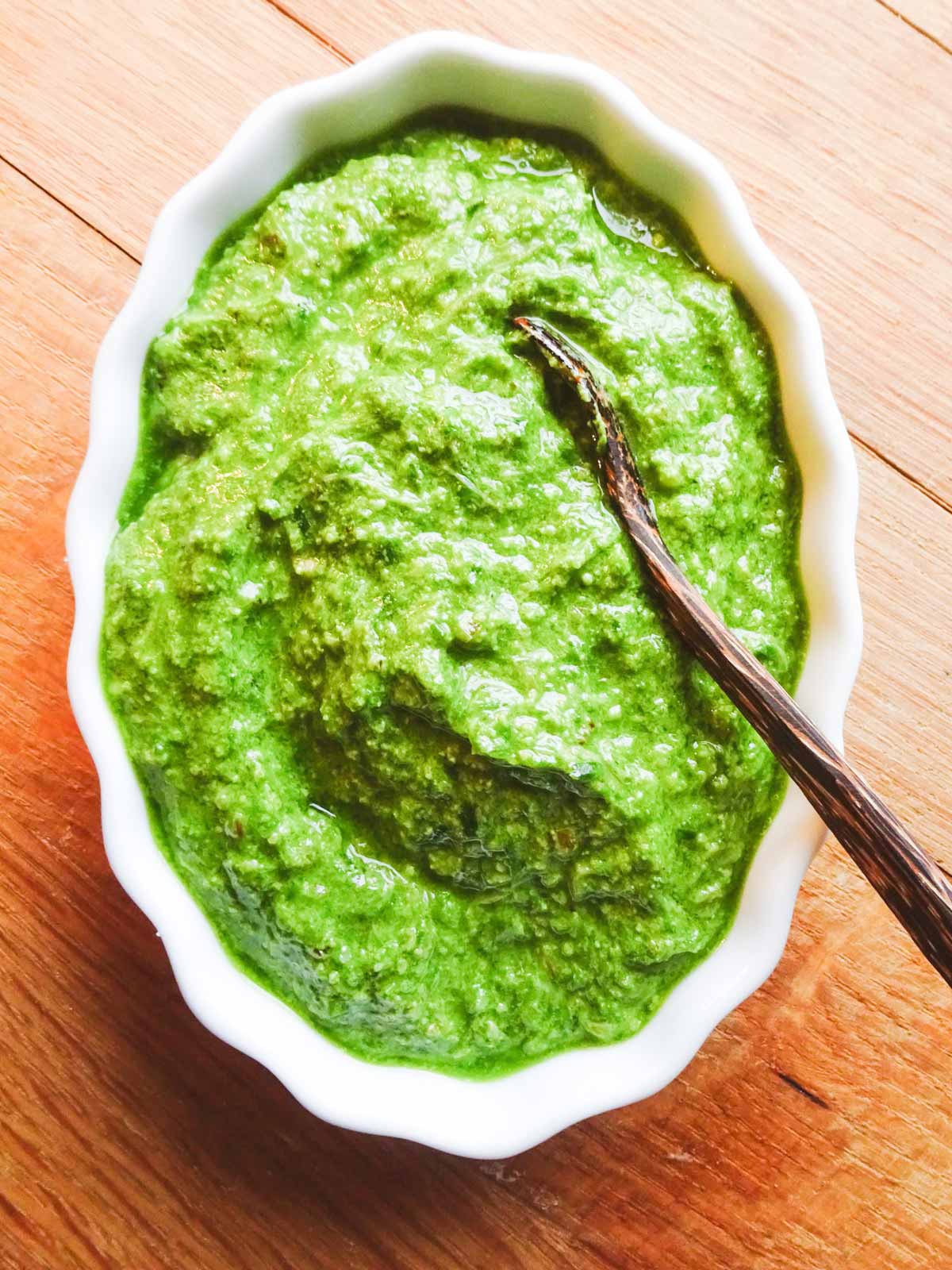
This post may include affiliate links. Please read my disclosure policy.
The bright green leaves of ramps are reminiscent of basil. This is probably why someone first decided ramps need to be made into pesto.
And honestly, that person was right! You can chop ramps up in salads, you can pickle the ends, and you can saute the greens. Serve it over gluten-free pasta, pair it with our fresh and bright San Marzano pasta sauce, or dip garlic bread in it. Just make it!
What Makes This Recipe Different
- Walnuts- This recipe features walnuts rather than pricey pine nuts. I love the earthy flavor they give. They stand up to the ramps and give a beautiful texture to the sauce.
- Saute- You don't need to do this step but if you find the garlicky flavor overwhelming consider giving the greens a quick saute to bring out their natural sweetness.
What Are Ramps?
Ramps are often called spring onions, garlic, or leeks but they are none of these. Part of the onion family, They have a stronger garlic flavor with a bit of sweetness like an onion.
Ramps are not easily cultivated so they can't be found in grocery stores. I typically find them at specialty grocers and farmer's markets but you might be able to forage for them in your own backyard.
When are ramps in season?
They grow in the eastern United States and Canada and are in season for 2 to 6 weeks during the early Spring. Ramp season is typically late April to early June.
How Do You Store Ramps?
If the ramps haven't been cleaned at all rinse the majority of dirt off and drain in the sink. Don't worry if they come covered in mud- that is totally normal.
Next, roll them in a damp paper towel, and place them in a plastic bag, unsealed. and keep them in the fridge. Make all the leaves are covered by the towel and don't bend or crush the plant.
Warning, your entire refrigerator now smells like garlic.
How to Clean Ramps?
First off, ramps require a significant amount of cleaning. These babies are special and worth the extra effort.
- Rinse ramps under cool running water or submerge in a large bowl of cold water.
- Discard any tough, overly large leaves unless your recipe involves pureeing. (They offer a lot of flavor but can be difficult to chew).
- Trim off roots.
- Pull back and peel off any translucent skins (these are similar to the skins you find on scallions or green onions). Warning- they do feel a bit slimy.
- Give a final rinse until the water is clear and the ramps are free of dirt and sand.
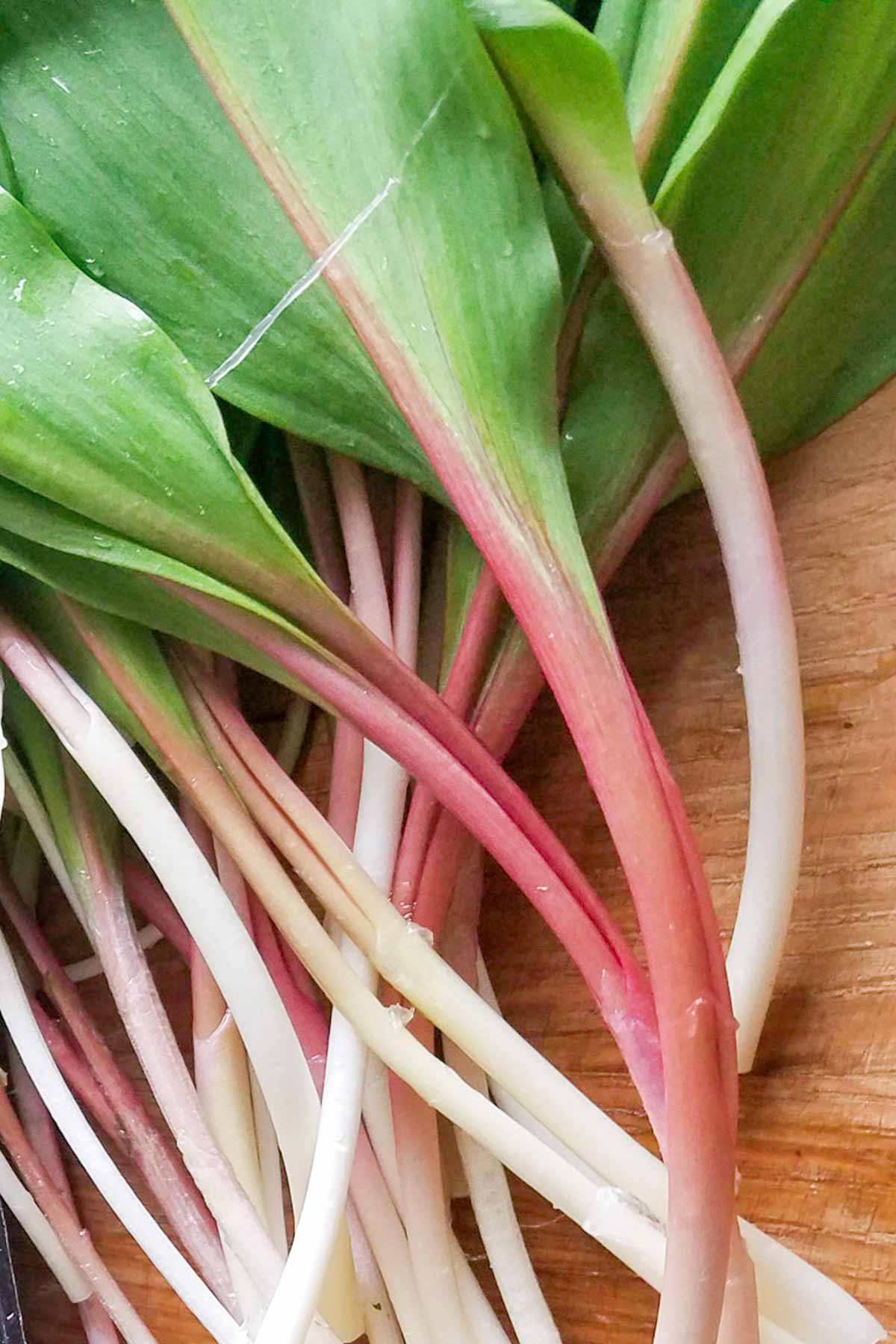
🧾Ingredient Notes
This recipe uses the standard pesto format. Replacing ramps for basil leaves and walnuts for pine nuts.
- Ramps- This recipe uses one bunch of ramps, which is typically 1 to 2 fist full. Around 8 ounces.
- Oil- If you have walnut oil on hand I prefer that over olive oil in this pesto. Walnut oil adds a lovely richness to the pesto. Whichever oil you choose, make sure it is high quality as the oil adds a lot to the flavor.
- Nuts- You can use pine nuts, walnuts or even pistachios.
- Cheese- Note that parmesan cheese is not vegetarian as it contains rennet. Try using Romano or Asiago cheese as a substitute.
- Lemon- Not all traditional pesto recipes use lemon but I love the zip it gives simple sauces.
💭 Vegan Wild Ramp Pesto
To make this recipe vegan substitute 1 teaspoon of nutritional yeast for the parmesan cheese.
⏲️How to Make Ramp Pesto
Once you have your ramps cleaned and prepped, this pesto comes together quickly. Now some people may tell you the best way to make pesto is a mortar and pestle, which you are welcome to do. But I going the mechanical route.
- Just like with all pesto, we toast the nuts in a dry pan to bring out their natural oils. Be sure to watch them carefully as they can burn quickly.
- Once the walnuts are toasted, add them to a food processor or blender. Pulse a few times to break up the pieces.
- Add the ramps, parmesan cheese, and lemon, and add a bit of lemon zest for a bolder flavor, to the food processor. With the food processor running slowly drizzle in the oil until the pesto reaches your desired consistency., scrape down the sides as needed. Season with sea salt and black pepper to taste.
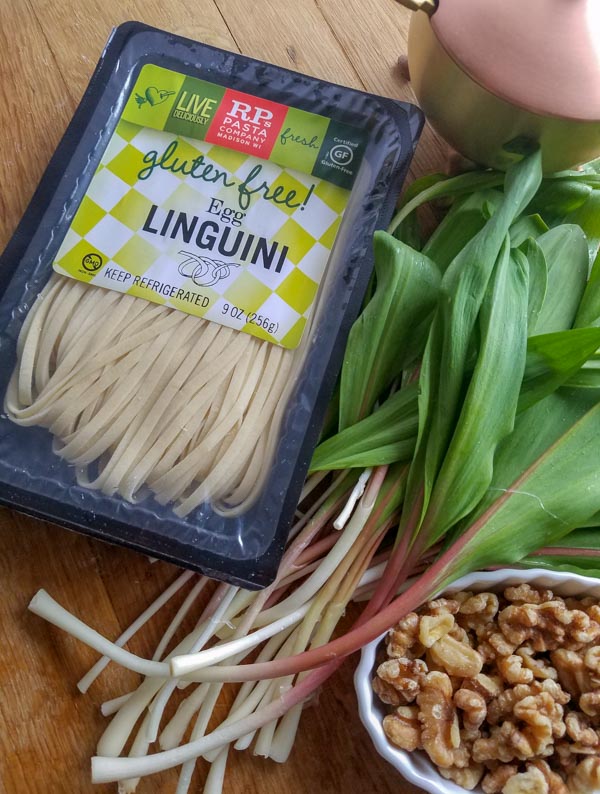
Expert Tip
- Some chefs may tell you they blanch the green leaves to keep their vibrant color. I don’t find this really matters if you are eating the pesto right away or freezing it.
- If you don't have enough ramps to make a full recipe you can add parsley, arugula or baby spinach to stretch the recipe.
🌡️Storing Leftovers
Extra pesto can be stored in the fridge for 2-3 days. Be sure to use an airtight container as the smell is a bit pungent.
How to Freeze Pesto
I prefer to freeze pesto in ice cube trays for easy use. Once frozen the blocks can be removed from the tray and moved to a ziptop freezer bag. The pesto will keep 3 to 4 months in the freezer.
More Spring Recipes
Did You Enjoy Making This Recipe? Please rate this recipe with ⭐⭐⭐⭐⭐ or leave a comment. It helps other wonderful people connect with my food.
📖 Recipe Card
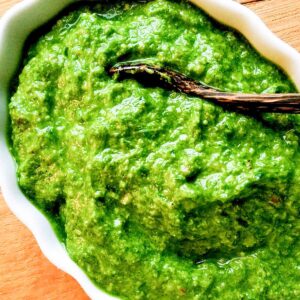
Ramp Pesto
Ingredients
- 1 bunch wild ramps
- ⅓ cup chopped walnuts or pine nuts
- ½ cup extra-virgin olive oil or try walnut oil for a twist.
- 2 teaspoon lemon juice
- ¼ cup parmesan cheese
- kosher salt and pepper to taste
Instructions
- Thoroughly clean ramps. Separate green leaves from white/ pink roots. Roughly chop.1 bunch wild ramps
- Place a saute pan over medium heat, toast the nuts for 3 to 5 minutes. Keep a close eye, nuts can go from toasty to burnt quickly. Add the toasted nuts to a blender or food processor. Give it a quick whirl to break up the pieces.⅓ cup chopped walnuts
- Add green ramp leaves, lemon juice, cheese, and a pinch of salt to the blender. Pulse to combine. Slowly add the oil while blending at high speed. Start with a ⅓ cup of oil and add more, if needed, to get to the desired consistency.½ cup extra-virgin olive oil, 2 teaspoon lemon juice, ¼ cup parmesan cheese, kosher salt and pepper
- Adjust salt, pepper, and lemon juice to taste.
Notes
- It is optional to blanch the green ramp leaves. I only do this if I am making the pesto ahead of time and want to ensure it stays vibrant green.
- auteeing the wild ramps is an optional step but I find it brings out a bit of the natural sweetness. Add 1-2 tablespoon of the oil to the pan. Add green and white ramp parts, saute for 3 to 5 minutes until softened. Move to the blender.
- Pesto will keep for 3 days in the refrigerator.

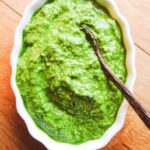
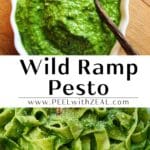
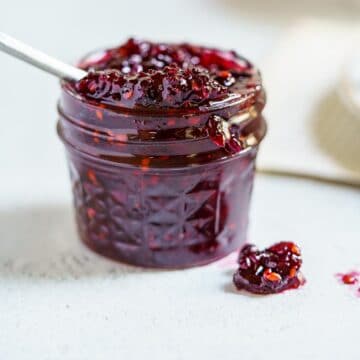

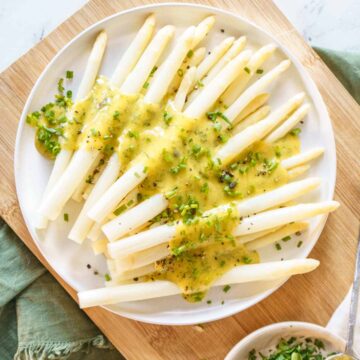

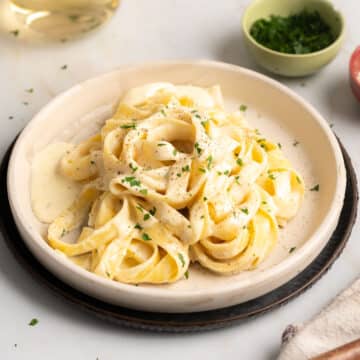
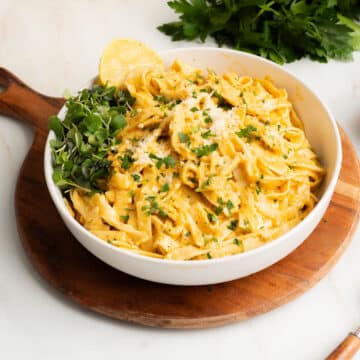
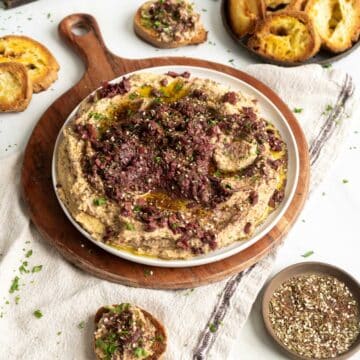
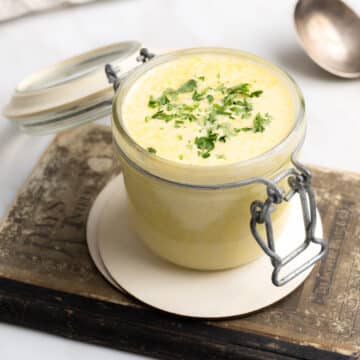
Butterfly says
I'm confused. In #3 it says "Add green and white ramp parts, saute 3-5 minutes...." In #4 it says "Add green ramp leaves, lemon juice..." Are the leaves being sauteed? I ended up sauteing both and adding to the food processor. Seems like way too much oil too. It was almost runny.
Melanie says
I noticed this too. I've made my foraged ramp pesto many times before, but never sauteed any of it. So I halved the bulbs and sauteed them throwing in a small handfull of leaves. I'm very glad I didn't do more, as they cooked down very quickly leaving a cooked spinach sized portion. Cooking the bulbs did take a bit of the bite out. I doubled the recipe, using about 25 ramps (I wondered what constituted a "bunch" as well). It came out very well! Next time I'll go back to no sautee, olive oil and pine nuts and compare the two.
Heather says
What is one bunch?
Jen Wooster says
You should be able to hold the stems in hand.
Melanie says
See my reply to Butterfly?
Jen Wooster says
Yes thank you for your feedback. Much appreciated!
Swathi says
I am yet to cook with wild ramps sounds like they make excellent pesto I am going to check it out after the current situation. Love that gluten free pasta great with pesto.
Leslie says
Oh my goodness. Your ramps pesto looks divine! What a clever recipe!
Uma Srinivas says
This pesto sounds awesome. I like to try different types of pesto recipes. Looks yummy!
Pavani says
I have heard a lot about ramps but never tried them. Your wild ramp pesto sounds absolutely delicious and has a very vibrant color. Thanks for sharing this yummy recipe.
Noelle says
I have never ad ramps before but they were delicious and I really love the pesto recipe, all-around great recipe!
Emily Liao says
This is such a great homemade pesto recipe! The flavors are so fresh and the consistency is perfect for pasta.
Patrice says
I've never cooked with wild ramps before so I learned something new! Always love new pesto ideas.
Katie says
This looks delicious! Can't wait to try it.
Diana Reis says
I love alternatives to basil for pesto. Great choice and great recipe.